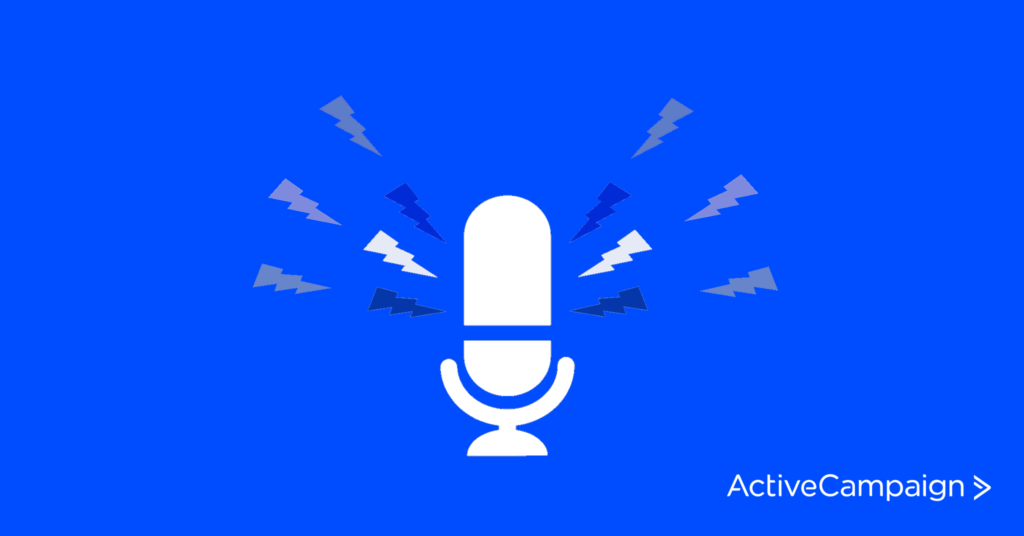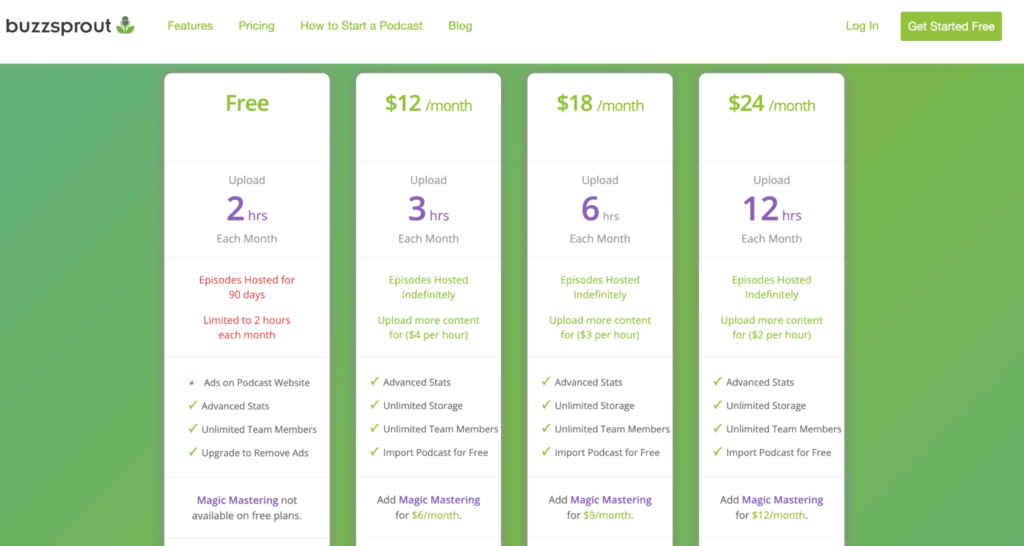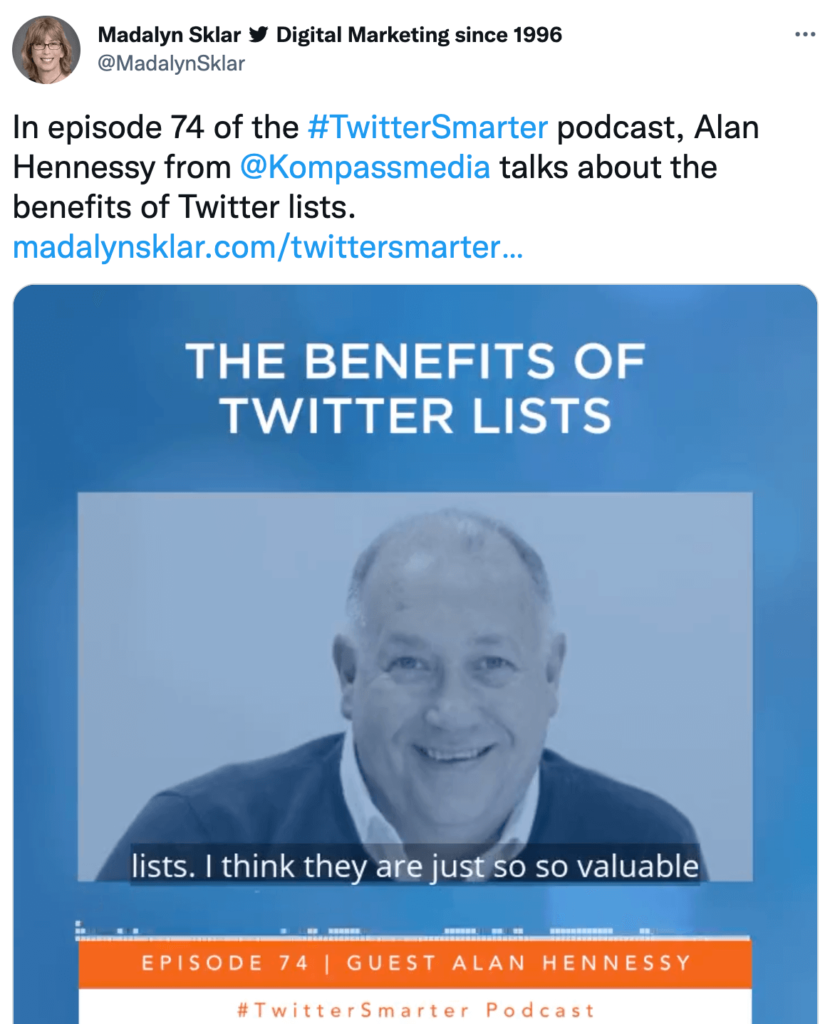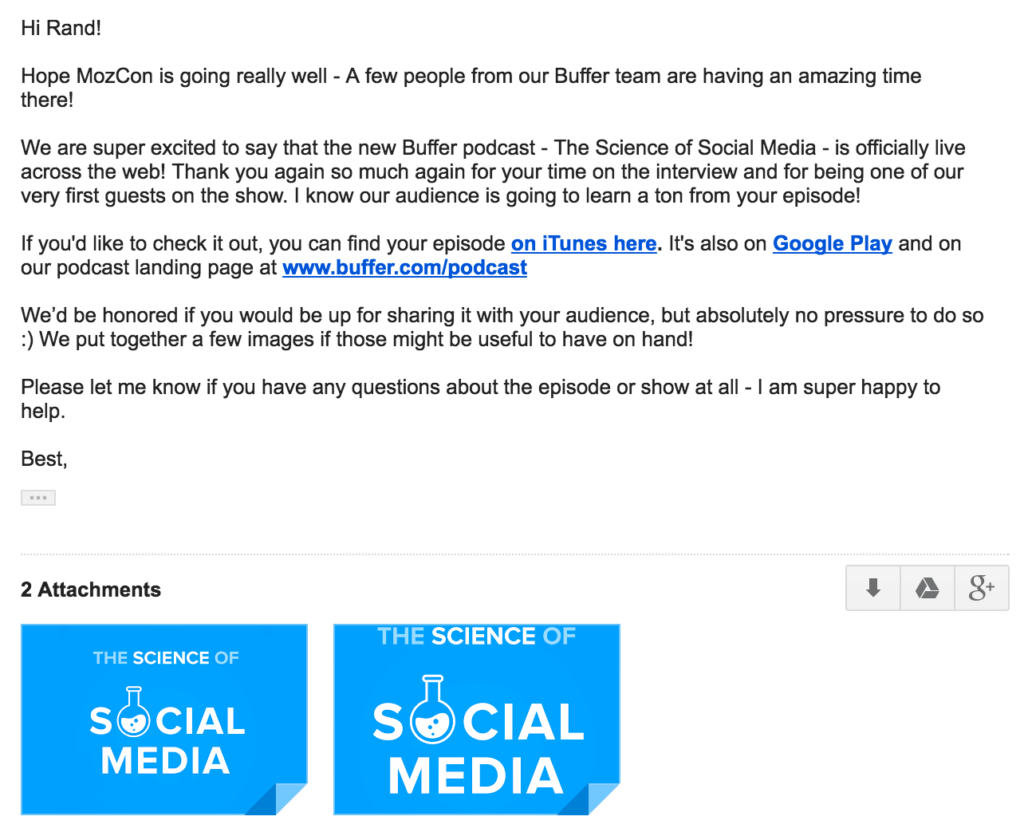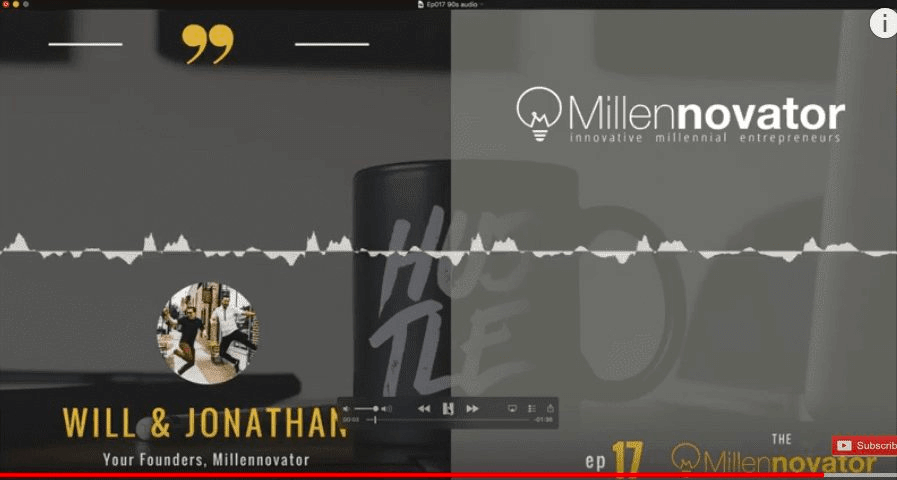No products in the cart.
Email Marketing
How do you market a podcast? 11 podcast advertising techniques
Podcasts (spoken word, audio-only, or video-complemented online shows focused on a particular theme or topic) have become ridiculously popular.
Right now, there are more than 2 million podcasts (not episodes, podcasts) available worldwide.
That is an impressive number, but how many could you name? Starting a podcast is the easy part. Getting people to find you and actually listen to it? Not so much.
Podcast marketing is a very particular set of skills and tactics that only a few podcast hosts will really master.
In this guide, you will learn how to grow those skills and discover 11 podcast marketing tactics that could mean the difference between a handful of listeners and a cult following.
Use the links below to jump to any section that catches your eye:
What is podcast marketing?
Podcast marketing is the process of promoting your show and growing your podcast audience. It involves a variety of strategies and tactics to launch your show, engage your existing audience, and continue to find new podcast listeners.
Here’s where things get a little complicated.
Podcasts are also used as a powerful form of digital marketing in and of themselves. This is especially common in B2B circles, where marketers use free podcasts to grow brand awareness, solve customer challenges, and build authority in the industry.
(And yes, we’ve got one too!)
ActiveCampaign’s podcast page
But, even if you’re looking to build a podcast to support an existing business (rather than creating a podcast show as a revenue generator), you still need to market it.
Get started with automation fast using our FREE pre-built email automation template starter pack!
How do you market a podcast? 11 podcast marketing tactics
Recording podcast episodes is the easy part. The hard part is getting people to find you. With this in mind, let’s explore 11 powerful podcast marketing tactics to grow your audience and engage your listeners.
1. Launch with a minimum of three episodes
First rookie mistake: launching your podcast with only one episode.
Podcast marketing is all about getting people hooked. To achieve this, you need to understand a bit about listener psychology and preferences, and the first thing you need to know is that in 2022, people love to binge!
When you launch with just a single episode, new subscribers who listen to your first (and only) episode will be craving more but will need to wait a week (or longer, depending on your schedule) before they get another episode.
During this time, you can quickly lose their attention.
Solve this problem by launching your show with a minimum of three episodes. More is better (3-6 is the sweet spot), but you also need to make sure you can keep up a regular cadence.
Let’s say you want to drop a new episode each week.
The ideal situation would be to record five new episodes before taking your podcast to the world. You’ll launch with three live episodes and keep two more in the pipeline for the next two future episodes.
When you record a new episode each week, you’re working a couple of weeks in advance, taking the pressure off the production and giving you a bit of leeway if things don’t go according to plan during recording and editing.
2. Set your sights on New & Noteworthy
Your number one goal should be to get on the Apple Podcasts New & Noteworthy list when launch day comes around.
Apple podcasts new & noteworthy page (Source)
No, not everyone will get there, but this is a surefire way to boost your audience numbers right at the beginning.
Getting on New & Noteworthy is a bit like ranking on Google. There’s no concrete secret sauce, but there are a few best practices to follow that give you a strong shot:
- Generate hype and an audience around your content before launch (Apple Podcasts is looking at momentum as a factor here)
- Make sure you have quality cover artwork
- Have at least three live episodes (see!)
- Launch with high-quality audio content (maybe obvious, but you’ll be surprised how many amateur podcasts fail to cut out clicks, pops, coughs, and sniffs)
- Drive review on Apple Podcasts right out of the gate (arrange with reviewers before launching)
- Keep publishing consistently
- Encourage listeners to rate, review, and subscribe
3. Leverage directories and aggregators
Next, you need to think about how and where people are actually going to listen to your podcast. This can feel a little overwhelming because there are a ton of options:
- Spotify
- Apple Podcasts
- Overcast
- Castbox
- Google Podcasts
- iHeartRadio
- Overcast
- Stitcher
- PodcastAddict
- Pocket Casts
- TuneIn
- Pandora
- Podchaser
And the reality is, you should be on all of them. But don’t stress, you don’t need to upload your podcast episodes to every directory or aggregator individually.
In fact, you don’t actually upload your episodes to a directory at all; you use something called a podcast hosting platform.
Buzzsprout is a popular option here. They have some pretty affordable pricing options and can help you with other features like podcast mastering, transcription, and listening analytics.
Buzzsprout pricing page (Source)
Once you’ve got your hosting set up, you’ll get an RSS feed. This is a direct link to where your show episodes are hosted.
Share this RSS feed with each of the podcast directories listed above, and then every time you drop a new episode, they’ll pull it directly from your feed and show it on their platform.
4. Be a guest on another podcast
One of the great things about the podcasting community is that it’s highly collaborative.
Podcasts are regularly looking for guests for their own shows, and this can be a great way to build new connections and simultaneously grow your audience.
Let’s say, for instance, that you have a podcast about email marketing tactics. There are a ton of other topics where overlap exists:
- Copywriting
- Sales outreach
- Database management
- Lead nurturing
- Ecommerce sales and promotions
- Building an email list
No doubt some podcasts exist that speak about each of these topics. Put a list together of shows that feel like a good fit, and reach out to the podcast hosts to see if they’d be open to having you on as a guest.
This tactic allows you to get in front of an existing audience and promote yourself and your audience (plus, it gives you even more experience and insight into the podcasting world).
Take this tactic a step further. Ask them to appear on an episode of your podcast, too. This has the potential of attracting their listenership over to your show!
Start closing bigger deals with our FREE sales process template!
5. Repurpose and distribute
Your ultimate goal with podcast marketing is to grow your listener base. To do this, you need to reach more non-listeners.
One of the most powerful ways is to publish consistently on social media platforms. Of course, you can’t just throw your whole podcast episode up on Twitter.
You need to edit and repurpose your content (in a manner that’s relevant for the platform) and then distribute it consistently.
For Instagram, short video clips work well, as do excerpts of episodes turned into image carousels.
Jordan Peterson’s Instagram page (Source)
For Twitter distribution, use short audio clips to build intrigue, then link out to the full episode.
Podcast snippet on Twitter (Source)
6. Make it easy for podcast guests to self-promote
If you’re having guests on your podcast (you don’t have to, by the way), you’re doing it for two reasons.
The first is for the content itself. But you also want to bring on guests who have an audience you may be able to tap into.
Make it easy for guests to promote their appearance by providing them with repurposed content that they can distribute (clips, quotes, image carousels, etc.).
For instance, when Buffer featured Rand Fishkin (SparkToro CEO) on their podcast, they followed up with a thank-you email that included some social images Fishkin could share with his audience to promote his appearance.
An email from Buffer to Rand Fishkin (Source)
7. Always publish on YouTube
Though podcasts are largely audio-only (that’s certainly how they started out), many show owners incorporate video as part of their offering.
This is a powerful way to reach a wider audience (some people find it easier to engage with content when they have something to watch). It’s also a lot harder and more expensive to produce video podcasts than it is to stick with audio-only.
But here’s the thing: you can (and should) publish to YouTube even if you’re not doing video.
Why?
Because the audience potential is huge compared to the effort required to upload, so it’s a no-brainer.
You’ll need some kind of imagery to go with your audio, of course, and it’s ideal if it’s a moving video, even if it’s something simple like a waveform and your podcast logo.
An audio podcast on YouTube (Source)
8. Don’t forget your podcast SEO
SEO isn’t just for written content, nor is it just for Google.
It’s for search engines, and guess what? YouTube, Spotify, and Apple Podcasts all have search engines.
SEO for podcasts is a huge topic all on its own, but here are a few best practices to set you on the right path:
- Choose a podcast name that makes it easy to find (literally include what your podcast is about in the name)
- Use SEO tools like Semrush or Ahrefs to identify key search terms, then include these in your podcast episode names
- Use podcast transcriptions and show notes to maximize your written content ranking opportunities and to provide accessibility (or better yet, turn each episode into a blog post)
9. Shout out relevant brands and partners
Savvy podcast marketers leverage the audiences of brands they don’t even have as guests on their show but that they talk about and recommend.
For example, maybe you have a podcast about inside sales tactics, and in your latest episode, your guest discusses how their team uses Gong to analyze demonstration calls and understand the best word tracks to use.
As part of your repurposing and distribution, you should edit a little snippet of this conversation, post it, and tag Gong in your post.
This will help you get in front of some of their audience, and you might even be able to get them to repost it on their pages for more reach!
Automate Your Podcast Marketing
Build your audience while automating your podcast marketing with a 14-day free trial of ActiveCampaign
10. Invest in paid advertising
Growing your audience through organic social media content is a good move, but it does mean that you need to grow your social media channels as well!
Paid advertising can be a great way to bypass this process and get in front of potential listeners from the get-go.
You’ve got a few options here. Your standard advertising options (digital banners, sponsored social media posts, PPC) all work for podcasts, but you can also advertise on other podcasts!
Make a list of shows that discuss similar topics (and thus have relevant audiences), and see if they’d be open to running an ad spot to promote your podcast.
11. Join a podcast network
Perhaps one of the best ways to grow your network, find new opportunities to expand your audience, and meet potential guests, is to join a podcast network.
A podcast network is a group of podcasts that work together to grow each other’s audiences through cross-promotion, guest spots, and podcast takeovers.
There are a few different options here.
The first is an in-house podcast network, which is when a business has multiple podcasts (for example, YMH Studios).
The second is a little more casual. A group of friends who each have their own podcasts can get together and create a podcast network to collaborate and cross-promote.
Then, there are professional podcast networks like:
- Gimlet
- Earwolf
- Wondery
- Radiotopia
- PodcastOne
These networks come with some significant benefits (improved ad revenue, help with production, industry networking opportunities), but you should also bear in mind that you may lose some creative control, and the network is likely to take a cut of any revenue in exchange.
Conclusion
Podcast marketing takes a lot of effort and time investment, and there’s a lot more to podcasting than recording a couple of episodes and throwing them up online.
To maximize your reach and your ability to grow an audience, you will need a successful podcast marketing strategy.
And we have just what you’ll need to get the ball rolling.
Ready to jump straight in? Get started with our free podcast strategy template!

